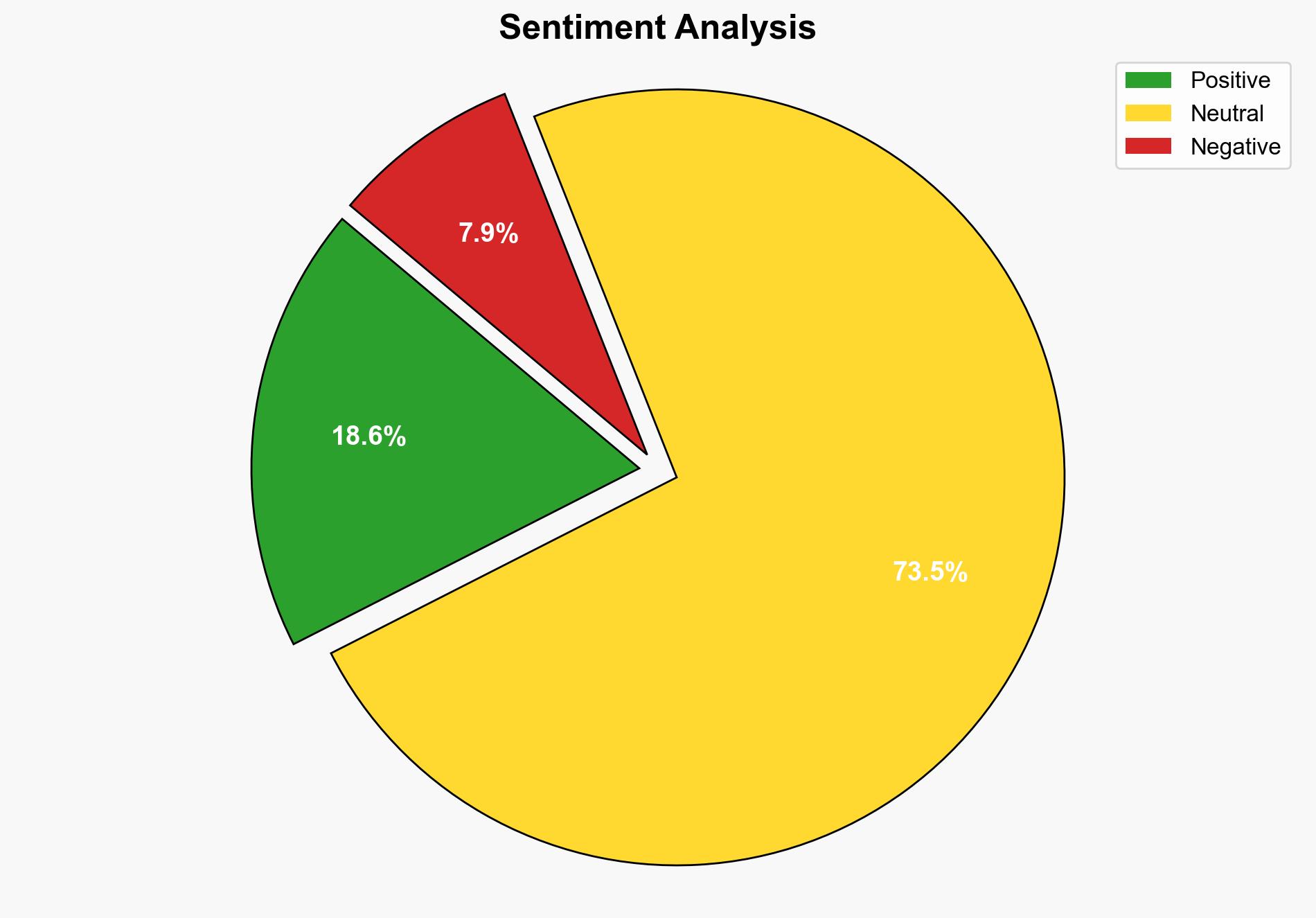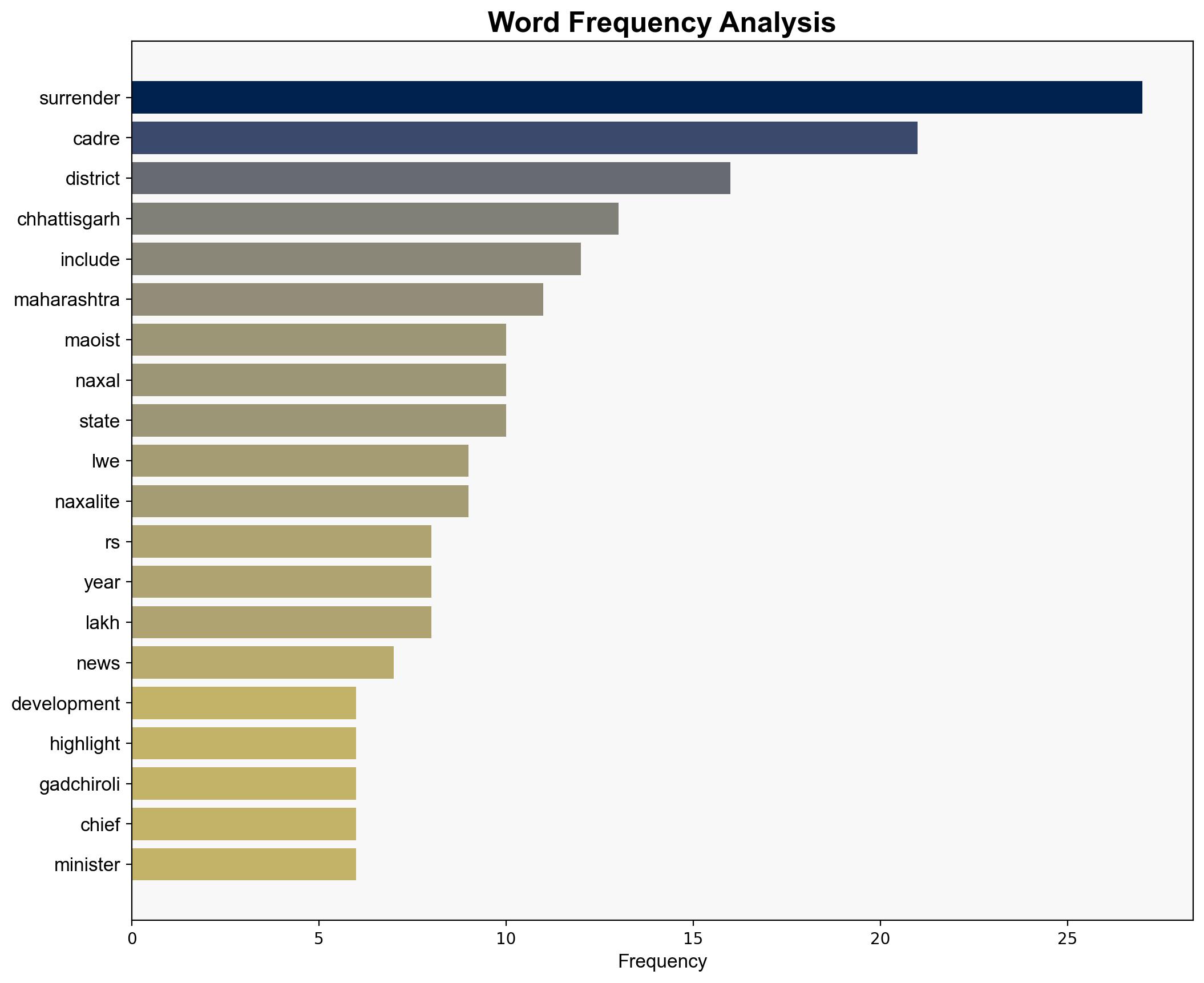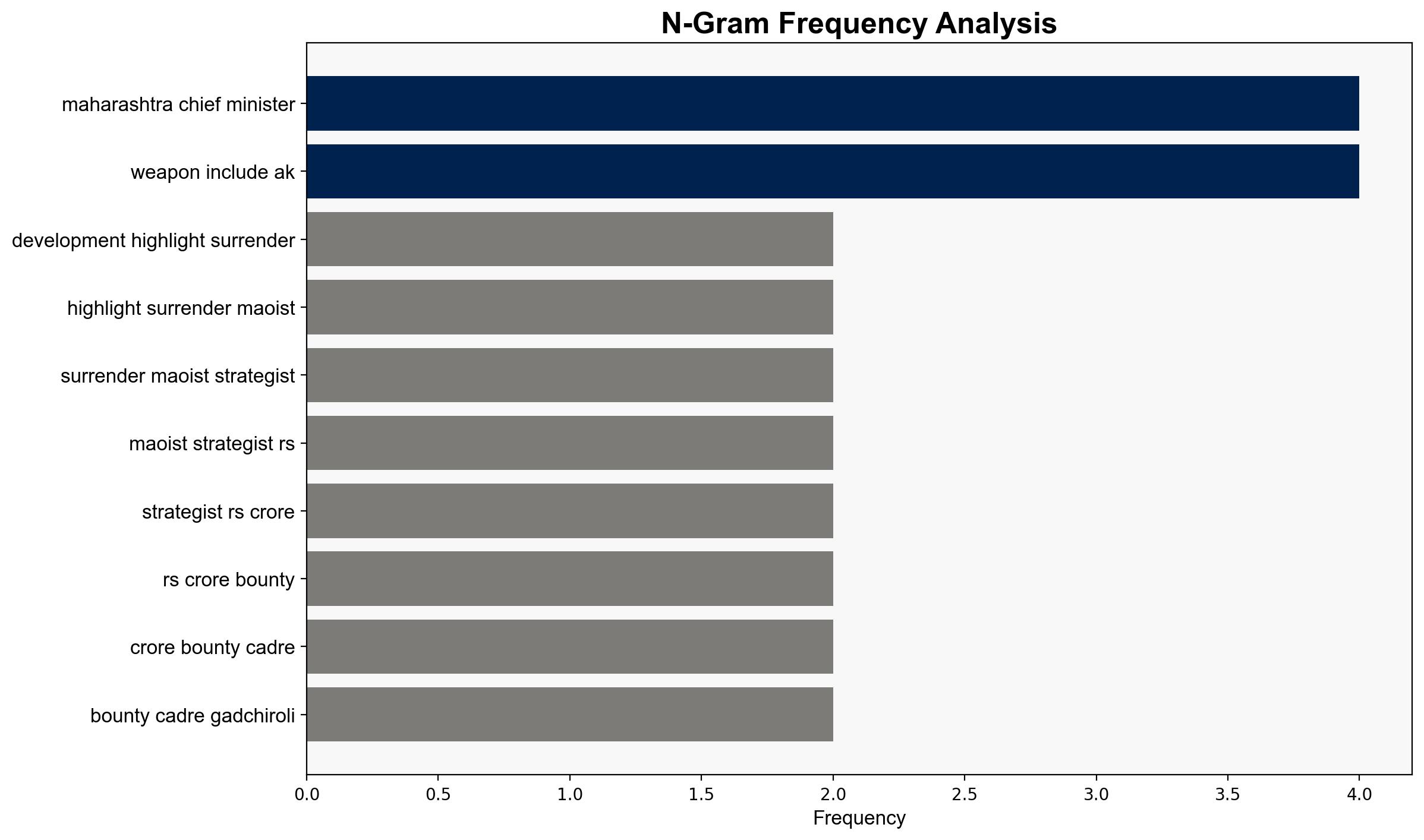139 Maoists surrender in two days as government vows ‘Naxal free Bharat’ – The Times of India
Published on: 2025-10-15
Intelligence Report: 139 Maoists surrender in two days as government vows ‘Naxal free Bharat’ – The Times of India
1. BLUF (Bottom Line Up Front)
The recent wave of Maoist surrenders in Maharashtra and Chhattisgarh suggests a potential weakening of the Naxalite movement, possibly due to strategic government initiatives and disillusionment among cadres. However, there is a moderate confidence level in this assessment due to potential retaliatory threats and the complexity of the socio-political landscape. It is recommended to maintain heightened security measures while enhancing rehabilitation and integration programs for former Maoists.
2. Competing Hypotheses
Hypothesis 1: The mass surrender of Maoists indicates a significant weakening of the Naxalite movement, driven by effective government policies and a loss of ideological appeal among cadres.
Hypothesis 2: The surrenders are a tactical maneuver by the Maoists to regroup and reorganize, using the opportunity to infiltrate government programs and gather intelligence.
Using ACH 2.0, Hypothesis 1 is better supported by the evidence of government initiatives, economic incentives, and public statements of disillusionment. However, Hypothesis 2 cannot be dismissed due to historical patterns of Maoist strategy and the potential for deception.
3. Key Assumptions and Red Flags
Assumptions include the belief that economic incentives and rehabilitation programs are sufficient to deter future Maoist activities. A red flag is the potential underestimation of Maoist adaptability and resilience. Inconsistent data on the true motivations of the surrenders and the absence of independent verification of the numbers surrendered are notable blind spots.
4. Implications and Strategic Risks
The reduction in active Maoist cadres could lead to short-term stabilization in affected regions, encouraging economic development. However, there is a risk of retaliatory attacks or a strategic regrouping by remaining Maoist factions. The psychological impact on local populations and the potential for increased recruitment if government promises are not fulfilled pose additional risks.
5. Recommendations and Outlook
- Enhance intelligence operations to monitor potential Maoist regrouping activities.
- Strengthen community engagement and development programs to address underlying socio-economic grievances.
- Scenario Projections:
- Best Case: Continued surrenders lead to a significant decline in Maoist influence, enabling economic growth and stability.
- Worst Case: Retaliatory attacks increase, undermining public confidence and destabilizing the region.
- Most Likely: A mixed outcome with sporadic violence but overall reduction in Maoist activities.
6. Key Individuals and Entities
Mallojula Venugopal Rao (alias Bhupathi), Rajman Mandavi, Raju Salam, Oyam Lakhmu, Devendra Fadnavis, Vishnu Deo Sai, Lloyds Metal & Energy Ltd.
7. Thematic Tags
national security threats, counter-terrorism, regional focus, socio-economic development




